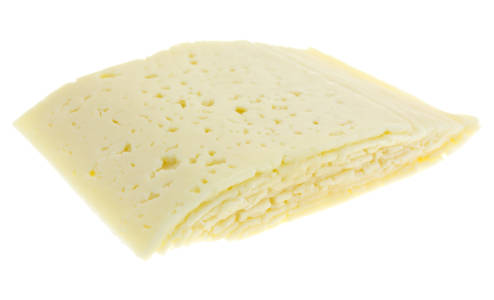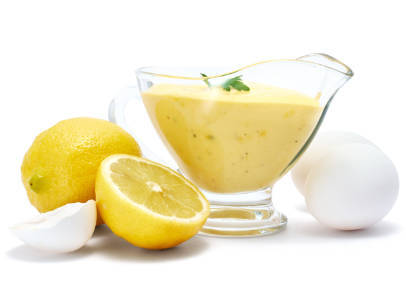All Ingredients
Harzer
This is a strong German cow's milk cheese. Use within a few days after purchasing. For best flavor, serve at room temperature.
Learn moreHass avocado
This is available year-round and has a rich flavor and creamy texture. The skin turns almost black when the avocado is ripe, which can camouflage bad bruises. This is the best variety by far for guacamole, but it turns a bit mushy in salads.
Learn morehatcho miso
This is a very strong, salty version of miso that's made with soybeans and aged for up to three years. It's reddish-brown, somewhat chunky, and often used to flavor hearty soups.
Learn moreHavarti
This mild Danish cow's milk cheese is perfect for slicing into sandwiches. It's often flavored with spices and chilies.
Learn moreHawaiian salt
This unrefined sea salt gets its pinkish-brown color from Hawaiian clay, called 'alaea, which is rich in iron oxide. The clay also imparts a subtle flavor to the salt. The salt is expensive, and hard to find on the mainland.
Learn morehawaij
This is a spice mixture used for stews, soups and meat rubs. A version is also used in coffee.
Learn morehazelnut
Hazelnuts have a crunchy texture and an appealing flavor that goes especially well with chocolate. Unshelled nuts show up in the produce department of larger supermarkets in the fall and winter. Shelled nuts are available year-round near the baking supplies. Before you use them, toast shelled hazelnuts in a 325° oven for ten to fifteen minutes, stirring occasionally. As soon a you take them from the oven, rub the nuts vigorously with a towel to remove their bitter brown skins.
Learn morehazelnut flour
This is ground from the cake that remains after the oil is pressed from hazelnuts. This is hard to find, but you can order it from Baker's Find (1-800-966-BAKE) or online from from King Arthur Flour.
Learn morehazelnut liqueur
This is great in coffee, on ice cream, or in cakes that use a liqueur as an ingredient. Frangelico is a well-regarded brand.
Learn morehazelnut oil
Nut oils are best used in cold dishes, as heat destroys their delicate flavor. Store in the refrigerator.
Learn morehazelnut paste
This is used as a filling in candies and baked goods. Look for it in specialty shops or Middle Eastern markets.
Learn moreheadcheese
This is made from parts of the hog's head, which are boiled together with spices and gelatin, then cooled and sliced. The result is a mosaic of meat chunks. It's good in sandwiches.
Learn moreheart
Long ago, primitive tribes believed that eating heart gave them strength and courage. Today, few of us bother to test that theory. It's our loss, because heart is tender and has a very delicate flavor. It's also quite inexpensive, thanks to its lack of popularity. To prepare it, you should rinse it in cold water, then cut out any blood vessels and connective tissue. Veal or lamb heart is delicious if you sauté or grill it until it's medium rare. If you cook it until it's well done, it becomes very tough. Alternatively, you can cook heart slowly using moist heat.
Learn morehearts of palm
These are peeled cabbage palm buds, and they're terrific in salads or as a vegetable side dish. You can buy them fresh only in Florida, but the canned version is quite good.
Learn moreheavy cream
at least 36% fat. Unlike heavy cream, lower-fat substitutes like half-and-half and evaporated milk tend to "break" or curdle when added to sauces. To prevent this from happening, heat the sauce over low or medium heat, or reduce the cream substitute before adding it to the sauce. Don't let the sauce boil. Cream sauces made with lower-fat cream substitutes also tend to have less body; to correct for that, consider adding 1 tablespoon flour or 2 teaspoons cornstarch to the sauce for every cup of evaporated milk substituted. Stir the thickener into a paste first to prevent lumps. Ultra-pasteurized whipping cream is harder to whip and has some unpleasant flavor notes.
Learn morehemp seed
Hemp seeds are a terrific source of protein and other nutrients. Hemp devotees claim that the seeds are as versatile as soybeans, and that they can be made into oil, milk, tofu, and many other goods. Look for the seeds (shelled of their hard green husks) in health foods stores.
Learn moreherb vinegar
Herb vinegars are a convenient way to preserve fresh herbs and to incorporate their flavor into salad dressings, marinades, and sauces. They're easy to make at home. Just put one or two sprigs of clean, fresh herbs in a bottle of warm vinegar, tightly seal the bottle, and let it stand for at least a few days. The sprigs will eventually become bitter, so remove or replace them after a few weeks. Make sure that the vinegar you use has an acidity level of at least 5% (this information is given on the label). Wine, rice, or cider vinegars are good bases for most herb vinegars. Don't add too many herbs to the bottle, or you may reduce the acidity of the vinegar so much that it loses its ability to preserve.
Learn moreherbal liqueurs
Herbal liqueurs include Chartreuse, Strega, Suze, Kümmel, Izarra, Jägermeister, Fernet Branca, and anise-flavored liqueurs.
Learn moreHerbsaint
Made in New Orleans, this anise-flavored liqueur was developed as a substitute for absinthe, which contains a narcotic and is outlawed in the United States. It's used in mixed drinks and Oysters Rockefeller.
Learn moreherring roe
The Japanese traditionally serve this on New Year's Day. It has an interesting texture, but it's not very flavorful.
Learn morehickory nut
These are delicious, but they aren't grown commercially because the shells are so hard. Pecans are a very close relative.
Learn moreHighland oatcakes
These mildly sweet crackers are a good base for hors d'oeuvres, but they're higher in fat than other crackers.
Learn morehijiki
Hijiki has a mild flavor, so it's a good choice if you want to slip a sea vegetable unobtrusively into your soups and stews in order to fortify them with calcium, iron, and other nutrients. When rehydrated, it roughly quadruples in size, so a little goes a long way.
Learn moreHimalayan red rice
This is a Himalayan version of our long-grain brown rice, only the bran is red, not brown.
Learn morehiyamugi
These slender Japanese noodles are often served cold. They're made of wheat flour.
Learn morehoisin sauce
This is a sweet and garlicky bean sauce that's often used as a dipping sauce. Available in Asian markets and in many large supermarkets.
Learn morehoja santa leaves
These heart-shaped leaves impart a root beer flavor to dishes, and they're great for wrapping tamales and other foods. They're hard to find; your best bet is a Hispanic market.
Learn moreHokkien noodles
These egg and wheat-flour noodles are popular in Malaysia and Singapore. They look like thick yellow spaghetti.
Learn moreHolland bell pepper
These are like bell peppers, only they're sweeter and have thicker walls. They come in different colors.
Learn moreHollandaise Sauce
You can cheat and buy this in cans, but the tinny flavor will rat you out. To make your own: See the recipes for Hollandaise Sauce, Hollandaise Sauce--Microwave or Quickie Hollandaise Sauce posted on RecipeSource.com.
Learn more








































































































































































































































































































































































